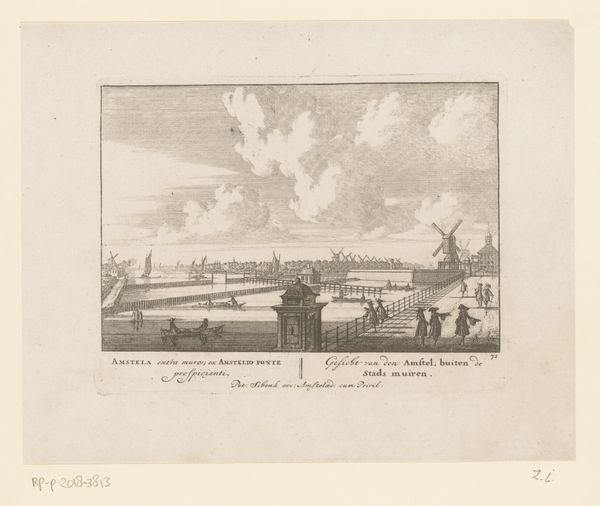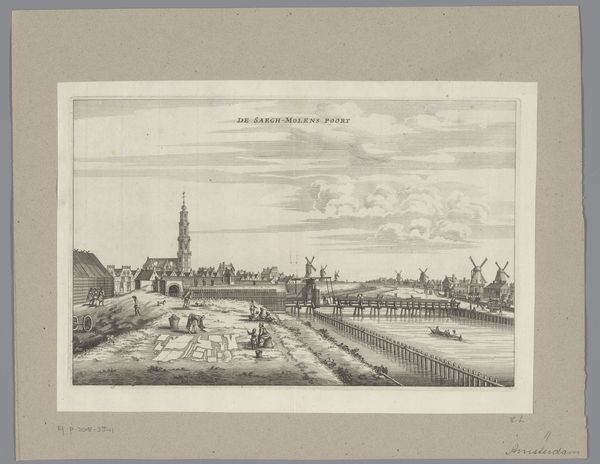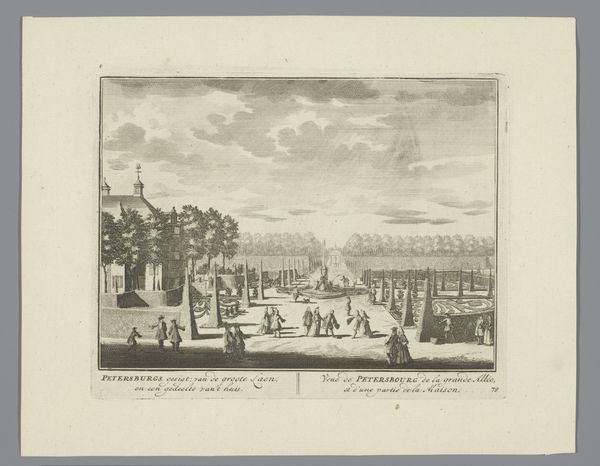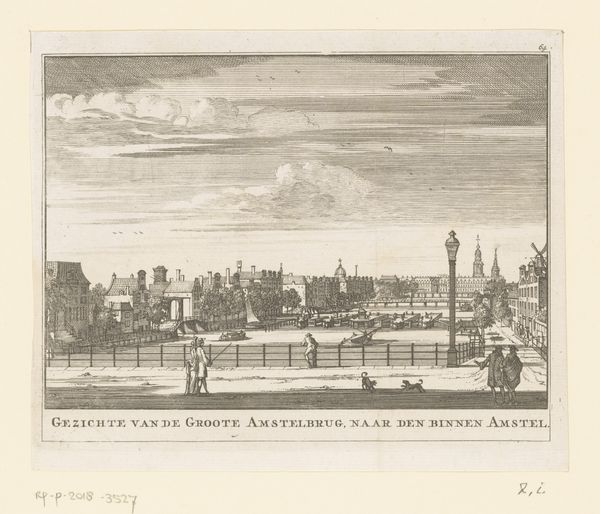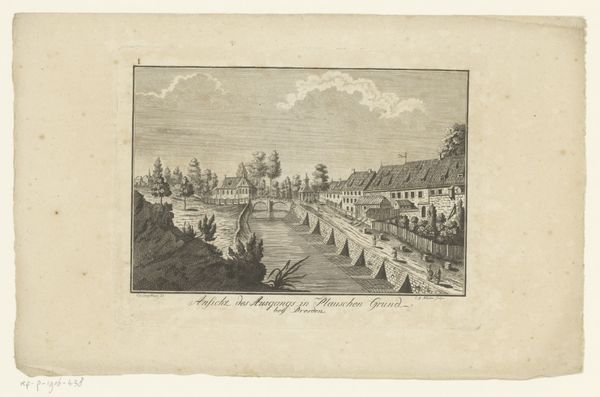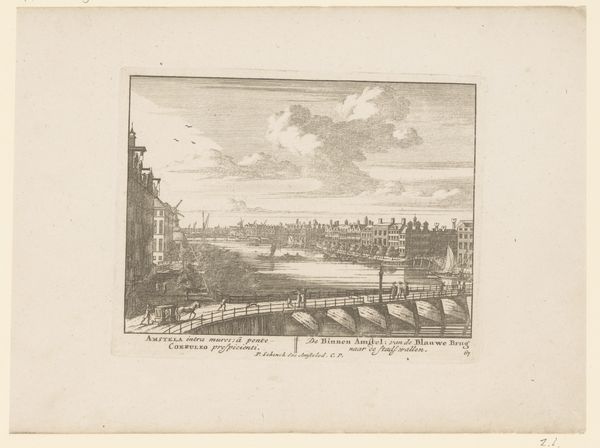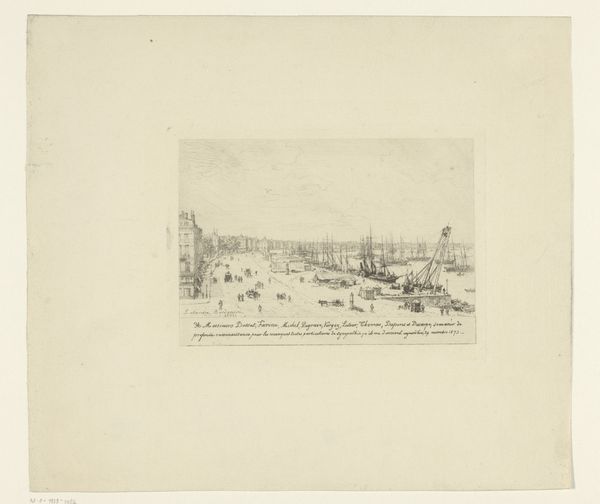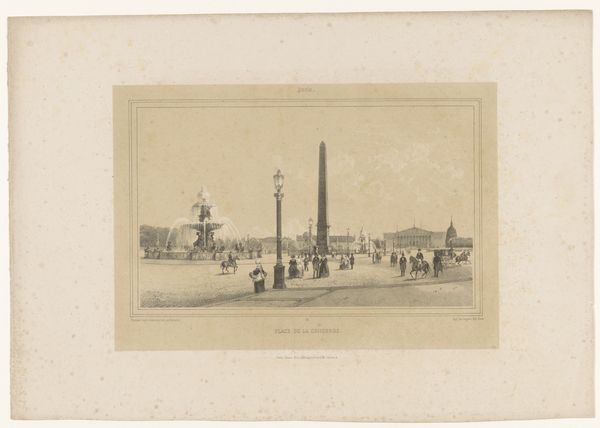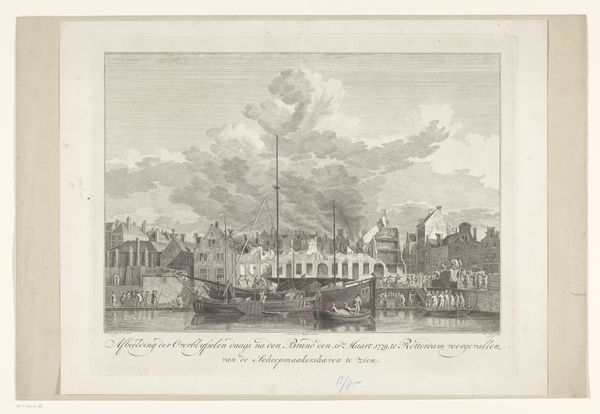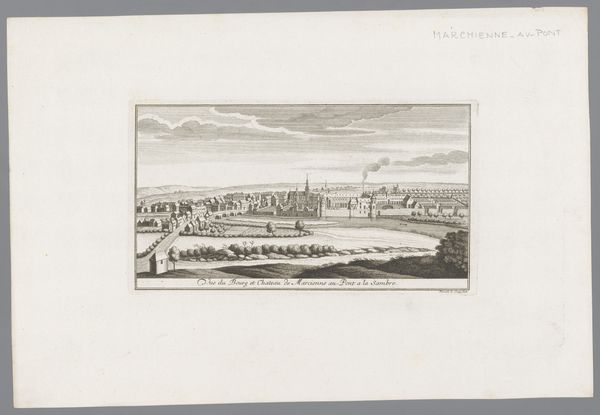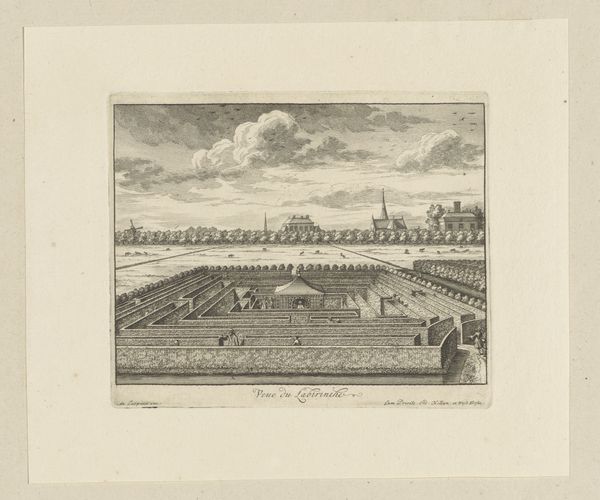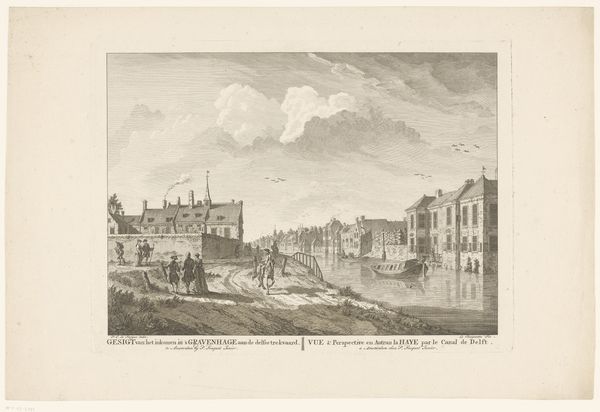
print, etching
#
dutch-golden-age
# print
#
etching
#
old engraving style
#
landscape
#
perspective
#
cityscape
#
genre-painting
#
realism
Dimensions: height 129 mm, width 171 mm
Copyright: Rijks Museum: Open Domain
Curator: Before us, we have "Gezicht op de Binnen-Amstel," an etching by Jan van Call, likely created between 1694 and 1697. Editor: It’s fascinating. A rather subdued composition, tonally very consistent, as one might expect from a print, almost sepia-toned even in its greyscale presentation. There's a dreamlike quality to this cityscape of Amsterdam. Curator: It really encapsulates that specific time. There are subtle, telling symbols. The cityscape contains social symbolism. You have merchants and what look like bourgeois citizens taking promenades. Their relation to the architectural elements speaks volumes about trade, power and class. Editor: Right. I see this landscape as representative of its socio-economic and political era. We have figures from different social strata within a shared landscape, implying certain tensions and inequalities baked into its presentation. The very structure reinforces an economic reality for ordinary individuals within this societal fabric. Curator: Certainly. There’s also a moral dimension – windmills are present within a domestic sphere and represent an aspirational image, connoting progress, commerce and local cultural power. Editor: But, conversely, does it not also potentially symbolize something darker? A cultural appropriation that may ignore some marginalized folks that can sometimes contribute to the engine that facilitates progress? A sort of visual code? Curator: A tension then? A potent one to explore... perhaps, in this case, we can't know for sure, we have to approach the past in dialogue with our contemporary moral expectations. Editor: Definitely! What resonates now is the sheer staying power of these pieces to provoke contemporary debate. To unearth history's unspoken stories. That to me, is it’s biggest draw and that element, from me, has never become less significant. Curator: Indeed, it is a beautiful work both formally and from an archetypal reading, it creates much thinking. It is fascinating to me that symbolic continuities present themselves again and again throughout art history, providing cultural touchstones from different societies, contexts and historical locations.
Comments
No comments
Be the first to comment and join the conversation on the ultimate creative platform.
